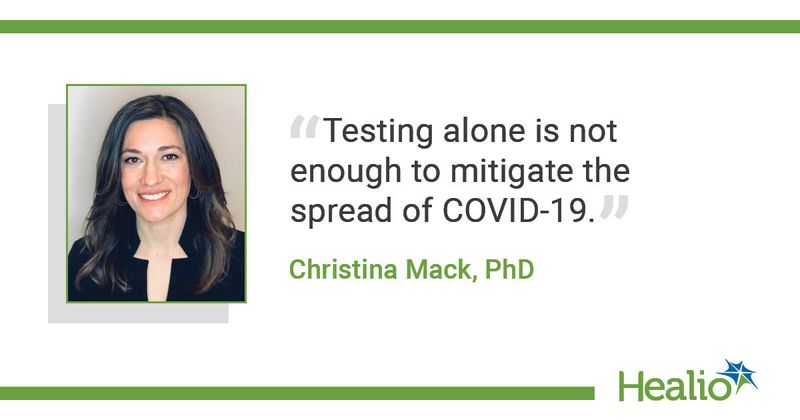NFL COVID-19 protocols have ‘broad and attainable implications’ for public
Intensive COVID-19 protocols helped reduce exposure to SARS-CoV-2 in the National Football League, according to a recent MMWR report.
Christina D. Mack, PhD, MSPH, vice president of epidemiology and clinical evidence at the data science company IQVIA and epidemiologist for the NFL, told Healio that mitigation efforts taken by the NFL have “broad and attainable implications” for the general public.

“An intensive protocol can be designed to fit a specific environment, tightening mitigation measures when there is a positive case or increased risk,” Mack said. “Examples include closing break rooms, decreasing room capacities, holding more virtual meetings. Being in a temporarily stricter protocol is also an effective reminder to be diligent and compliant with safety rules, and overall is an essential tool for workplaces and schools.”
Mack and colleagues examined the effectiveness of leaguewide COVID-19 protocol changes after 41 cases were identified among players and staff between Sept. 27 and Oct. 10. Clubs implemented an intensive protocol for 1 week if a positive test result was confirmed. The protocol was activated if a club had players or staff with facility access who contracted COVID-19 or if a team played against an opposing player who had a next-day positive COVID-19 test. Other parts of the new protocol included increasing testing frequency from 6 to 7 days per week, improving contact tracing and assessing transmission risk by focusing on identifying high-risk contacts.
A total of 29 of the 32 clubs spent a combined 431 days under the new protocol between Oct. 1 and Nov. 21. During the new protocol period, the median number of in-facility interactions of 15 or more consecutive minutes at less than 6 feet apart per club per day dropped by 60% (60 to 24 interactions), and interactions of two consecutive minutes or less dropped by 28% (1,691 to 1,222).
Mack said that denominating contacts by risk level is important for protecting communities. She also said that to properly characterize the contacts, researchers should look at “not only how long the contact was” but also “masking, ventilation, air flow, duration and distance.”
“Testing alone is not enough to mitigate the spread of COVID-19. Strict protocols like contact tracing and quarantine are needed,” Mack said. “What is important for an effective protocol is mandatory mask use, limits to the number of people who can gather at one time and avoiding high-risk situations, such as eating together or riding in personal vehicles.”

